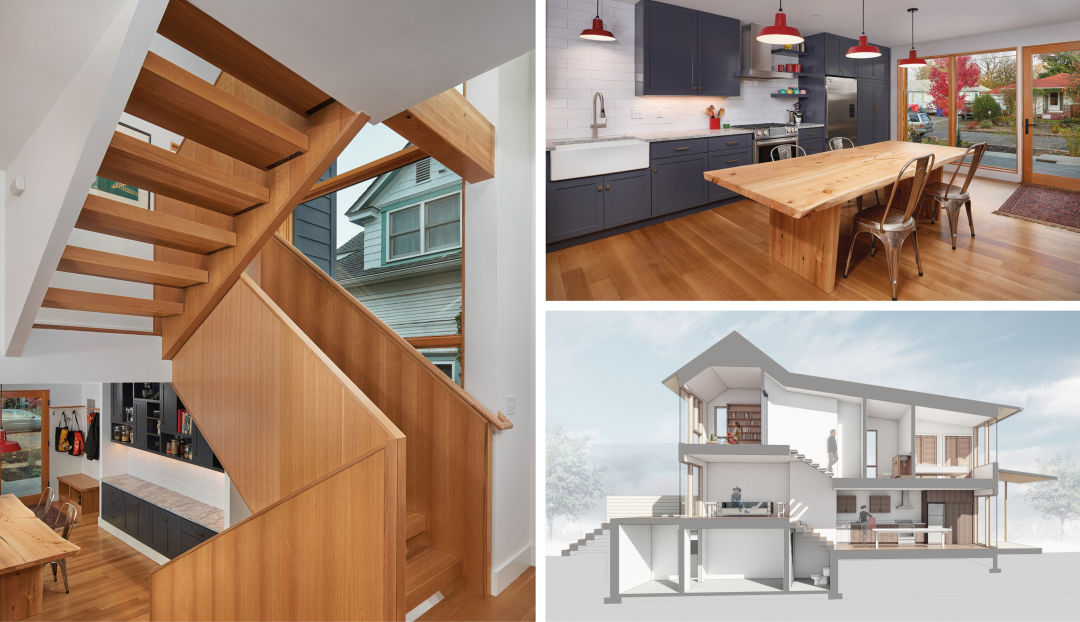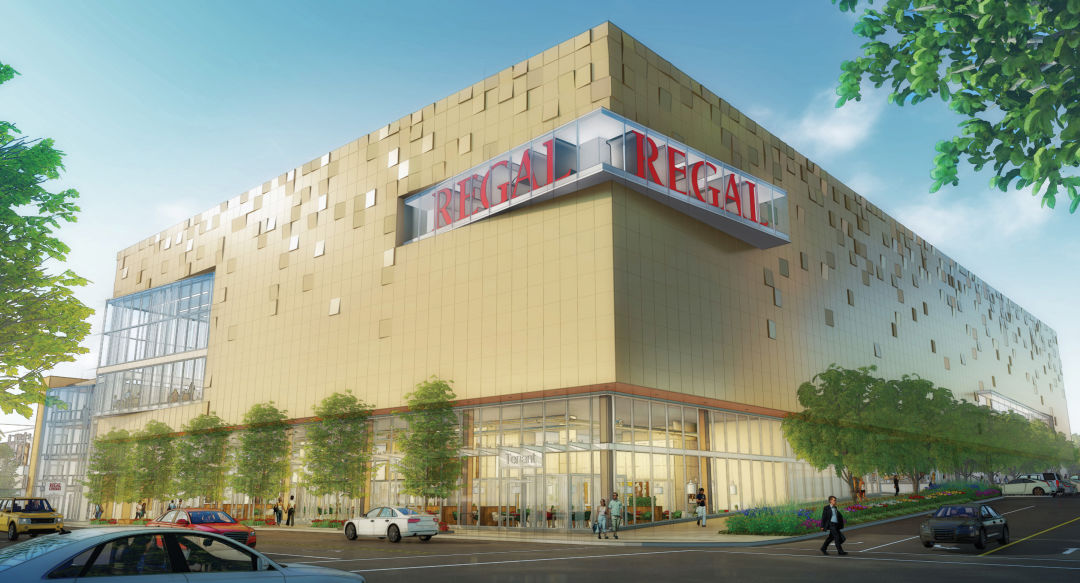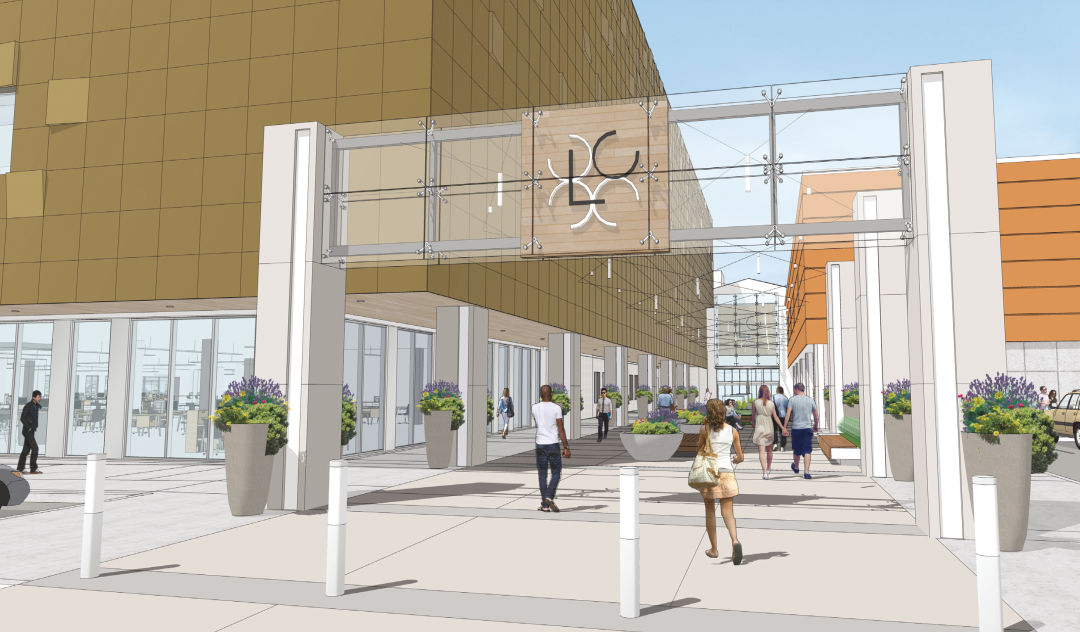
It would be an understatement to say that the University of Kansas and the local real estate market in Lawrence, Kan., are linked. In fact, Nicholas Lerner struggles to come up with a single example of a real estate transaction he’s participated in over his dozen years in the business that didn’t also involve his alma mater, a Division 1 basketball powerhouse. “I’ve helped everyone from people who’ve worked in the welding shop on campus to administrative people and parents buying houses for their students to investors,” Lerner, an agent with McGrew Real Estate in Lawrence, says. “Lawrence and KU are tied inextricably.”
What agents like Lerner have long understood about the close connection between real estate and colleges, city planners, developers, and school administrators are starting to notice as well. While universities don’t typically add to the cities’ financial ledgers through property taxes, they have always contributed to the local economy and real estate market by creating jobs, training people, and bringing in new residents. Still, relationships between colleges and their surrounding neighborhoods are changing as both public and private investors look for ways to turn innovation into entrepreneurial expansion.
Over the past decade or two, communities and schools have become more aware of the interconnectedness of the “town and gown” relationship. Meagan Ehlenz, assistant professor at Arizona State University’s School of Geographical Sciences and Urban Planning, points out the growing consensus that the fortunes of universities and their surrounding neighborhoods are bolstered by similar economic forces, leading to greater collaboration. In a study examining the association between university revitalization activities and neighborhood trends published in 2017 in the Journal of Planning Education and Research, she wrote: “Universities report mounting pressure to establish porous boundaries with the neighborhood, fostering a ‘sense of place’ in both town and gown to support institutional stability.”
In the case of public universities, at least, part of that mounting pressure is financial. “Higher education in general is in sort of a crisis today, in that federal and state funding is flat or declining,” says Rebecca Robinson, director of economic development at the Kansas State University Institute for Commercialization. “Universities are having to figure out other ways to be sustainable and create value. For us, that trend is partnering with industry.” While most private colleges have successfully recovered from the Great Recession, a recent report by the Council of Independent Colleges found that many of them are introducing innovations and partnerships that create new sources of revenue to combat both declining enrollment due to demographic challenges and increasing pressure to offer tuition discounts.
Picking a Major
Specialization is one clear path to success in real estate, and it’s no different in the effort to differentiate a college’s mission or strengthen a town’s economic development. The city of Harrisonburg, in Virginia’s picturesque Shenandoah Valley, has found a way to attract new residents by capitalizing on the local university’s cybersecurity program. Brian Shull, the city’s economic development director, says that after James Madison University became the first school in the mid-Atlantic region to offer an online master’s degree program on cybersecurity about a half a dozen years ago, Harrisonburg embarked on an effort to incorporate this specialization into its economic development plans. “We found that JMU had some very unique niches,” says Shull. “They developed a reputation in that world.”
The city organized a cybersecurity forum last April, inviting professors and an advisory committee from the program to help figure out the best way for Harrisonburg to capitalize on the initiative to spur its own economic development. “We came out of there with a nice to-do list of things to work on,” Shull says. One takeaway was that a tech conference could help showcase the area to companies that might be interested in relocating and taking advantage of the talent at JMU. The school, the city, and a private developer worked together to open Hotel Madison, which features 235 rooms and 20,000 square feet of meeting space. Because it’s the largest conference space between Roanoke and Northern Virginia, “it’s going to bring in a lot of people who normally wouldn’t have thought of the Shenandoah Valley,” Shull says. In September, the hotel will host Valley TechCon, a direct result of the cybersecurity forum.
Halfway across the country, another development project linking private and public institutions demonstrates that technological innovation sparks growth even in the oldest of economic sectors: agriculture. Established in 2008, the Knowledge Based Economic Development program came about as an LLC that would allow Kansas State University, the city of Manhattan, Kan., and private industry to create collaborative spaces to foster development and innovation. Robinson, who helps manage the more than 30,000 square feet of office and lab space that came out of the project, estimates that hundreds of jobs have been created over the past decade thanks to the partnership, which has enticed more than 18 companies to come to or expand in the area. Many food and bioengineering companies choose to lease space on campus due to the subject matter expertise at the school’s Department of Agricultural Economics. The so-called “Silicon Valley of biosecurity” has attracted a $1.25 billion investment from the Department of Homeland Security, which is currently building an infectious disease laboratory with the highest classification of biosafety possible on campus.
The on-campus office park offers coworking environments, business incubators, and build-to-lease office and research space. Developers brought in a local company to provide high-speed fiber internet and undertook a variety of infrastructure projects such as widening streets, adding lighting, and incorporating design features that would make the space feel like a natural extension of the campus, rather than a corporate add-on.
Tapping Into Entrepreneurship
Robinson says it’s hard to overstate the importance of sourcing the right types of real estate in bringing new companies to town: “One of the biggest challenges that we have with economic development in the region is having an appropriate space for the partners we’re trying to attract.” She says commercial real estate professionals are a key part of bringing new businesses to the area, especially when it comes to off-campus space.
However, town-gown friction is sometimes expressed in real estate. Kate Ryan, commercial leasing and engagement manager for the Kansas State University Foundation, remembers one chamber of commerce committee meeting where a commercial real estate broker didn’t want to have to compete with the university, which was trying to recruit companies to its on-campus incubator spaces. But “once he understood that we weren’t going after the same businesses that were downtown and thriving, he really grasped the vision we had and he jumped right on board,” she recalls. Robinson notes that because typical commercial rent on campus is so much higher than what companies will find in downtown Manhattan, campus officials serve businesses that have no other choice than to be located at the school.
Real estate pros can help business owners interested in relocating or opening up their doors in a college town by looking for incentives built into the landscape. For example, tech businesses that start up or relocate to the Harrisonburg Downtown Technology Zone get a three-year exemption on business, professional, and occupational license taxes and fees and a free water and sewer connection. The zone also provides incentives for renovating properties and assistance securing tax credits.
But Shull notes that economic development isn’t just about attracting new businesses. He says it’s important to maintain a good quality of life through amenities and affordable housing options: “It’s a mix: We need to have apartments downtown for young adults as well as quality single-family homes.” Like Shull, Manhattan city officials have had their eyes set on a variety of programs to achieve a healthy mix. In the 1980s, the city began a series of downtown redevelopment plans that were crucial to creating the vibrant community that today attracts new business owners and college students alike. One of the first steps was securing a $10 million federal grant to develop a shopping mall downtown, after turning down proposals to move a local mall in from the outskirts. As part of a second redevelopment plan initiated in the early 2000s, the city established tax increment financing and transportation development districts and secured $50 million in state and U.S. bonds, which helped transform an old steel warehouse mill into a walkable retail–restaurant area, among other projects. These redevelopment plans introduced a wider spectrum of amenities to attract young people, established professionals, and families to the area. “Downtown is a complement, more than anything, because of the quality of life it produces,” Robinson says. “It’s necessary for the types of companies we’re trying to attract.”
Keeping the Talent You’ve Got
Cities and universities shouldn’t rely solely on external recruiting to fuel innovation—sometimes the best catalysts for growth are already in town. “Being in a college town, we have a lot of students who are considering starting a company right after school. That’s really the perfect time to take that risk,” Shull says. “So it’s great to have the opportunity to work with those who want to stick around after graduation.” Harrisonburg offers up to $25,000 in low-interest bootstrapping funds to help new companies set up shop anywhere in the city.
Sometimes real estate companies make lasting connections with universities unrelated to the transfer of property. Lerner admires the willingness of his broker—fellow KU alumnus and 2017 NAR Treasurer Mike McGrew—to bring in college students to work on videos and marketing projects for agents and the brokerage at large. “Every year you have new blood and new energy that comes into this town,” Lerner says. Why not take advantage of the fresh perspective these new residents offer?
Real estate professionals can help turn students into long-term residents. But with rising student debt, many recent graduates find it difficult to transition to homeownership. Lauren Rogers, an agent at Kingsmill Realty in Williamsburg, Va., relies heavily on her work history with renters and landlords when helping recent alumni from the nearby College of William & Mary. While her background as a property manager has boosted her business, she also notes that renter-to-homeowner conversion contributes to a healthier market. “It helped our neighborhood to continue the cycle of growth,” she says.
Though Rogers’ rental and listing work is now concentrated in the upscale gated community of Kingsmill, she works as a buyer’s agent for many alumni with smaller budgets throughout Williamsburg. “A lot of young people from William & Mary stay here because there are a lot of large companies they can work for after graduation,” she says. And even if new grads aren’t quite ready to make the leap, Rogers recommends agents stay in touch and remain available to answer questions about the local market. “A year really flies by. If you make that connection and they trust you, they’re going to call you when they’re ready.”
Many of the same strategies apply when helping faculty buy in to the community, but there are a few additional considerations. Because Ryan Zimmerman, ABR, GRI, an agent with Wheeler Steffen Sotheby’s International Realty, has lived in Claremont, Calif., all his life, he’s a helpful resource for the many transplants drawn to the southern California area for jobs at one of the seven schools that make up The Claremont Colleges. His website features pages devoted to what makes the community special, and you can sense his passion when he talks about the preponderance of trees and independently owned retail. He also promotes college-funded lending programs that make it easier for faculty to buy homes near their new employer. Loan terms vary but can be 2 to 3 percent below market rate. “When I’m writing an offer, I always highlight that as a plus, because you don’t have to deal with a traditional bank,” he says. “Those transactions on the lending side of things are so much easier.”
How Your Expertise Fits In
Cities and universities benefit from working with agents and brokers to understand just what the local real estate industry needs in order to expand and thrive. Shull is regularly in touch with 15 to 20 residential and commercial real estate pros in Harrisonburg. “I use them as my sounding board quite often, to give me a barometer of the local market,” he says. “It’s great to have people with real estate experience to lend their expertise.”
Real estate professionals play a big role at Kansas State, both on and off campus. Ryan notes that communities and colleges do have ways for business leaders to get involved, but that they often go by a variety of names. Agents and brokers should seek out chambers of commerce, technology transfer offices, corporate and industry relations centers, and community engagement officers to find out more. “Not every institution will have those, and they don’t always work together,” Ryan cautions. “But I encourage people to participate in those things. You never know who you’re going to connect with.”
While economic development professionals clearly value the specialized knowledge real estate pros bring to the table, they also see them as front-line boosters for their communities. “When people are checking out the area, they’re calling a real estate agent first,” Shull says.
Part of working in a university town is not taking yourself too seriously. Back in 2008, Nicholas Lerner was considering marketing his real estate business on magnets that also featured the schedule for the popular KU Jayhawks basketball team. “Basketball is life in Lawrence, Kansas,” Lerner says. But rather than just posting his business contact information on the magnet, he wanted to get creative with it. Each year, he comes up with a funny new way to edit his face into the sports scene depicted on the magnet. One year, he even tried to insert himself interacting with highly regarded head coach Bill Self, but that concept didn’t make it through his company’s marketing review process. So instead of using the head coach’s likeness, Lerner replaced all the faces on the magnet with his own (see right). Now he says customers and local business owners keep the schedule up well past the basketball season and, when they see him, they ask when his next one will come out. Lerner says the $200 he spends on 250 magnets each year is well worth the investment in terms of branding and name recognition: “It became this kind of quirky thing that people expect of me. It’s hard to track that sort of thing, but people definitely look forward to it.”
View full article here at Realtor Magazine

















 Lofty Starridge condos capture views from their Portland Heights perch
Lofty Starridge condos capture views from their Portland Heights perch





 Remember the real estate agent who
Remember the real estate agent who 








